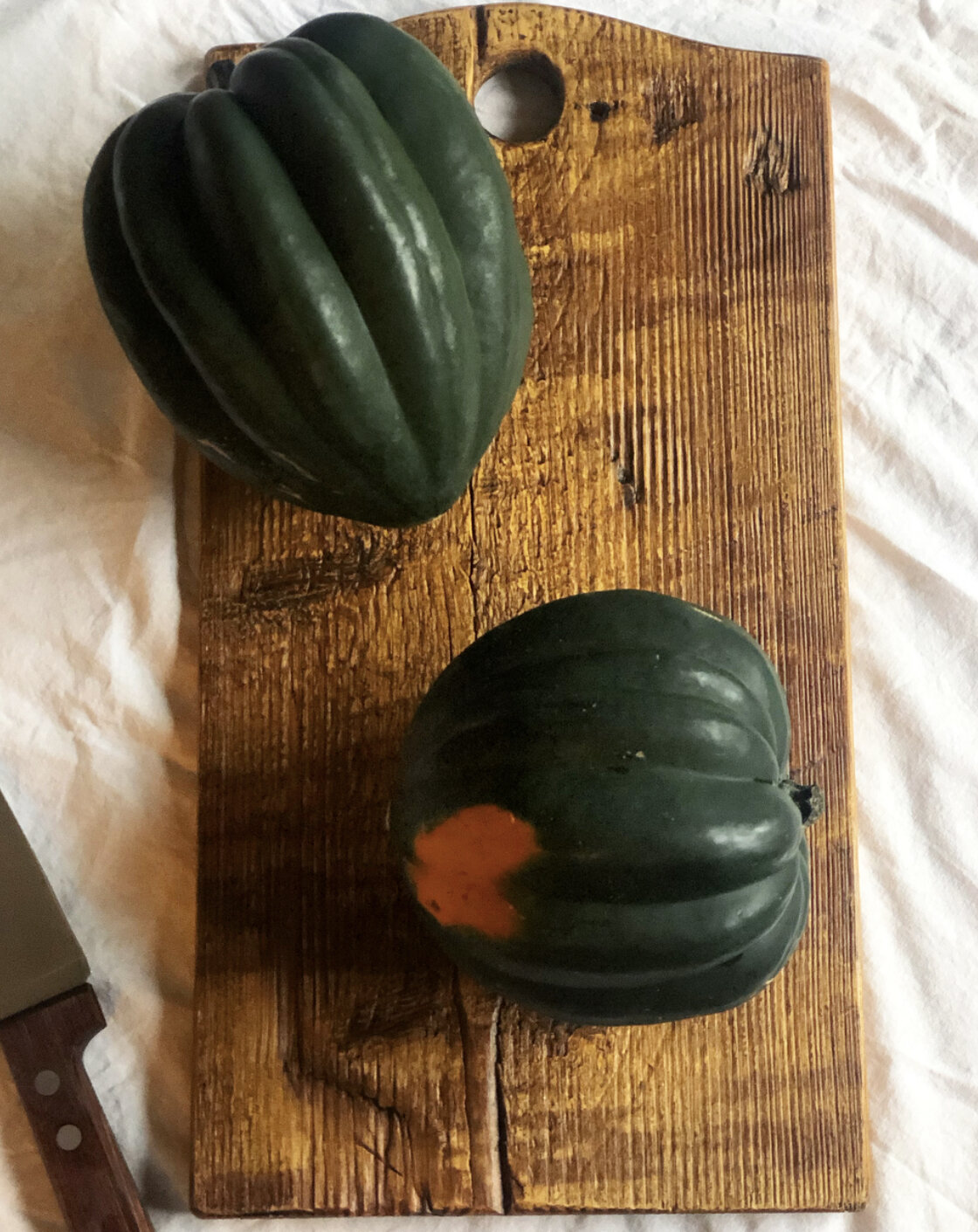If I had a dollar for every time my mother asked me the difference between butternut squash and acorn squash, I'd be a rich woman. In this post, I give you the DL on every squash you'll find at the market this fall!
Butternut squashes are on the larger end of the squash spectrum and have a light, buttery color. They flaunt a long neck with a wider seed-filled base. Like many winter squashes, they have thick, inedible skin. The flesh is light orange, lightly sweet, and becomes very smooth when cooked. Try it out in myButternut, Apple and Curry Galetterecipe!

Acorn squashes are dark green, sometimes with yellow or orange patches. They are relatively small and round with sectioning similar to a pumpkin. They are sweeter than butternut squashes, and you can easily make them into dessert with some brown sugar, nuts and spices (like I do inthis recipe).

Both delicata squashes and sweet dumpling squashes are yellow with gorgeous dark green striping. The only difference between the two is their shape. Delicata squashes are longer and thinner, while sweet dumplings are small and round. They both have a mild, slightly sweet flavor. Unlike most winter squashes, their skin is thin and edible, which means no peeling necessary! This makes them ideal for low-prep dishes, like myCinnamon Sugar Delicata Squash.
Carnival squashes are a cross between acorn squashes and sweet dumpling squashes. Like acorn squash, they are small and round with indented sections. Their coloring is yellow with adorable splotches of orange and dark green. They have a sweet, smooth, orange interior and edible(!!) skin. Like acorn squashes and delicata squashes, you can use them in sweet or savory dishes.
Kabocha squashes are a Japanese squash variety that looks similar to acorn and buttercup squashes. They have a round shape with thin, edible dark green skin and deep orange insides. After steaming or simmering in broth, their texture and flavor are similar to those of a sweet potato. What's not to love?
Buttercup squashes are deep green like acorn squashes and kabocha squashes, but they feature a belly-button-like indent at their base and less defined sectioning than acorn squashes. They have a much milder flavor than acorn or kabocha squashes, and a drier texture.
Hubbard squashes are massive (weighing up to 15 pounds!), irregularly shaped and have pale, lumpy skin. Inside, their flesh is sweet, yet mealy. This texture makes them better suited to pureeing or mashing than to roasting or sauteeing. Like most squashes, they are well suited for savory dishes, like soups or mashes, and sweet dishes, like pie or pudding.
Spaghetti squashes may look like normies, with their solid yellow skin and oval-like shape, but inside, they are far from ordinary. Their flesh consists of thin, stringy bits, similar to spaghetti noodles. Since they are virtually flavorless, most recipes use spaghetti squash as a pasta replacement or a base for casseroles with ample flavoring. To bake spaghetti squash, simply cut it in half, roast it and then tease the insides with a fork to loosen the stringy fibers.

You know 'em and you love 'em; baking pumpkins are small, orange and round. They have a segmented shape and a smooth, orange interior. Like butternut squash, their flesh is silky smooth — perfect for pureeing for pies,chilisand more. For use in the kitchen, make sure to buy varieties bred forbakingrather thancarving. If you don't, you'll be left with a mealy, watery and flavorless bake.
What’s your favorite winter squash? Tell me all about it in the comments!
Sustainable Eating, Seasonal Produce
Sustained Kitchen
squash, pumpkin, sustained kitchen, seasonal, types of squash, kinds of squash, acorn squash vs butternut squash, vs, butternut, what to do with, how to use, what to cook, spaghetti squash, recipes, sustainable food, sustainability tips
1 Comment